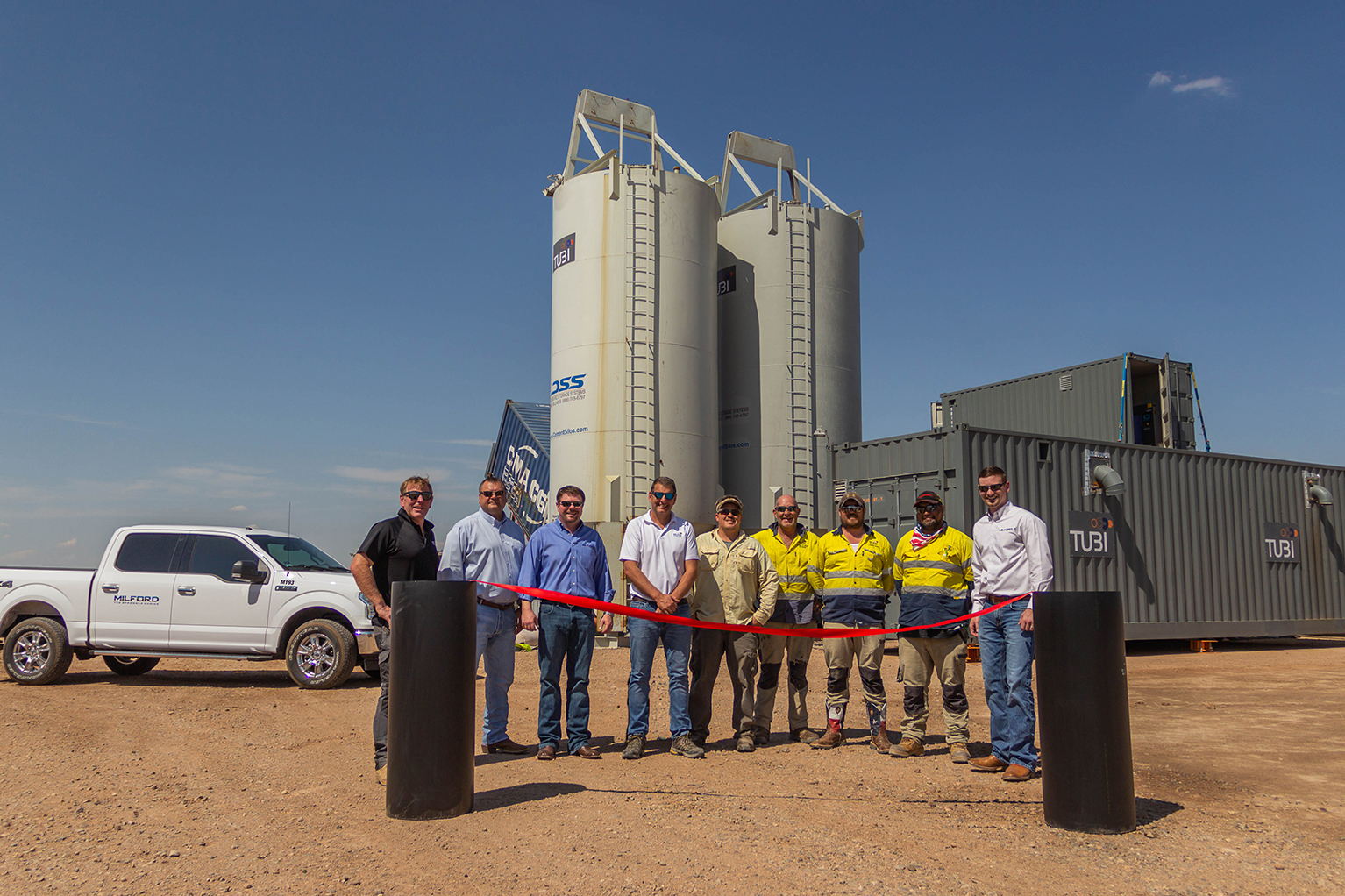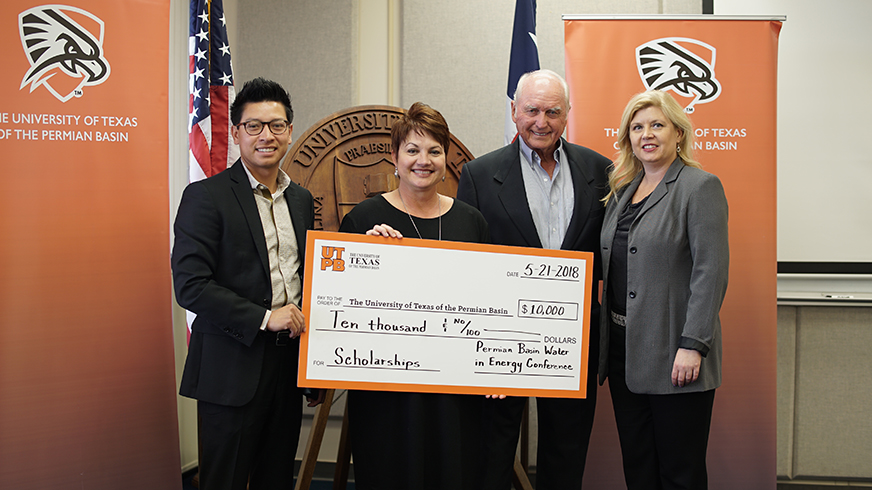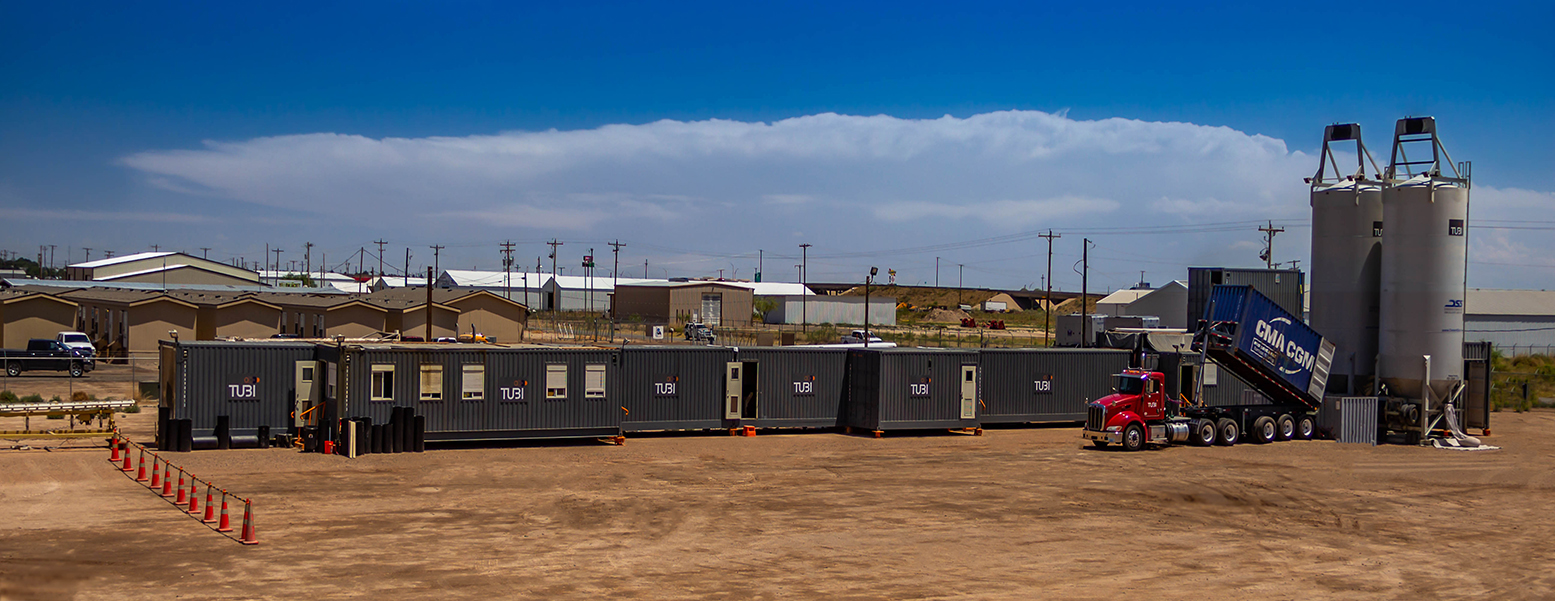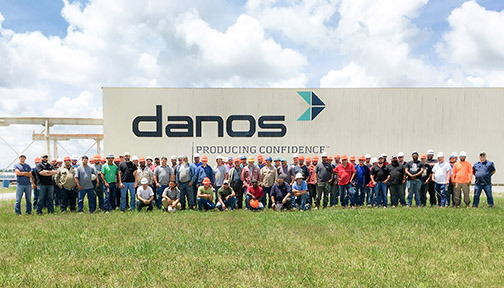Producing Pipe at the Well
Milford, an EPC corporation headquartered in Midland, has announced a strategic partnership and distribution agreement with Tubi USA Inc., a HDPE pipe manufacturer with a patented mobile production system.
As Marcello Russo, Tubi founder and CEO, commented, “Our production system has proven itself on projects in Australia and New Zealand and we are excited about putting our unique capabilities to work here in the United States. We’ve been looking for the right company to partner with in the U.S. for some time now, and Milford’s unique business structure that supports customers from project conception to completion is exactly what we were looking for.”
Utilizing custom-designed shipping containers, the ISO:9001 registered TUBI system can be mobilized and deployed to remote project locations and producing HDPE pipe, on site, in as little as 48 hours. The pipe is manufactured to the highest industry standards, including ASTM and ISO, using the latest extrusion technology and quality control with lengths up to 300 feet versus the 50-foot lengths currently available on the market.
Shawn Beard, CEO of Milford, said that one of Milford’s largest customers had asked them if they could somehow supply them with HDPE pipe lengths in excess of 50 feet. “When we let them know about the 300-foot length capabilities of Tubi, they basically demanded that we do our best to bring the system to the United States,” Beard said. “While the reality is that Tubi will only represent a small percentage of our total HDPE pipe business, we feel this system will create great value for our customers.”
Mark Tufts, Milford’s vice president for business development, said that the Tubi on-site extrusion effort is the first such effort in the United States and it allows Milford to minimize logistics issues, while at the same time maximizing pipe integrity. “More importantly, it eliminates the biggest safety concern with HDPE pipe, which is loading and unloading the pipe when it’s shipped on trucks,” Tufts said.
Milford is in the process of expanding its operations. They can be found online at milfordonline.com. Tubi can be found online at tubigroup.com.

Left to right: Peter Topham, Tubi Manager; Mark Tufts, Milford VP of Business Development; Shawn Beard, Milford CEO; Marcello Russo, Tubi Founder and CEO; Olan Teague, Tubi USA Operations Manager; Craig Coulter, Tubi Dispatch Supervisor; Jamie Todd, Tubi Operations Support; Rameka Graham, Tubi Production Supervisor; Chase Brown, Milford VP of Sales.
PBWIEC Gives Back
The Permian Basin Water in Energy Conference (PBWIEC), an organization that staged a sellout event in its first year, recently notched yet another milestone. Organizers report that they were able to give back $10,000 to the University of Texas in the Permian Basin (UTPB), an action that they described as “part of the conference’s stated mission and vision.” UTPB served as host for the inaugural conference.
According to Susan Knittle, event coordinator for the organization, “PBWIEC was able to pay out a scholarship Year One—and is now resetting their board and advisory board and will be opening sponsorships and early-bird registration soon.”
The Permian Basin Water in Energy Conference (it’s a recurring annual event) connects professionals, policymakers, and academics in the energy industry, as they explore the latest technologies for the future of water exploration, extraction, transportation, storage, enhanced drilling, and disposal.
Hosted by the University of Texas of the Permian Basin, the inaugural Permian Basin Water in Energy Conference event connects professionals, policymakers, and academics in the energy industry. As its organizers remarked, more changes have occurred in the petroleum energy sector in the past decade than in the last 100 years. Spread over four days (Feb. 20-23), the conference was “commercial free”—that is, no presenters were permitted to do any selling of their products or services. The organization maintains a website at pbwiec.com.

From left, Vice President of Operations and Compliance for Campbell Securities, Sam Segundo, Jonna Smoot, Vice President Marketing at West Texas National Bank, JJW Investments Jim Woodcock, and University of Texas Permian Basin President Sandra Woodley pose with PBWIEC’s donation to the University of Texas in the Permian Basin for $10,000.
Oil and Gas Deal Appetite “Soars”
With record-level dealmaking in the first quarter of 2018, 90 percent of oil and gas executives now expect the global mergers and acquisitions (M&A) market to improve in the next 12 months, up from 43 percent in April 2017. That is according to the EY Oil and Gas Capital Confidence Barometer (CCB), which finds that oil and gas companies represent the highest dealmaking appetite among all sectors surveyed, with 62 percent of executives intending to pursue M&A in the next 12 months compared with 52 percent globally. Dealmaking is expected to soar as portfolio optimization spurs M&A.
Looking ahead, 90 percent of oil and gas sector executives view global economic growth as improving or stable. However, respondents cite inflation (49 percent) and market volatility (40 percent) as the biggest risks to investment plans, amid rising oil prices and oilfield services looking to renegotiate contracts at higher rates. Oil and gas executives also view political uncertainty (54 percent) and geopolitical tensions (40 percent) as the two biggest risks to growth.
Andy Brogan, EY Global Oil & Gas Transactions Leader, says:
“The latest EY Global Capital Confidence Barometer reveals that major broad indicators, such as oil price stabilization and continued growth in demand—coupled with discipline shown by OPEC and non-OPEC members—has instilled confidence in oil and gas dealmaking over the past six months. But with government policy becoming harder to predict across the globe, companies are mindful that any increases in protectionism could have an impact on the efficient flow of goods and services across the sector.”
The report indicates that uncertainty and related disruption is driving M&A across the sector, with 60 percent of sector executives now placing portfolio transformation at the top of their boardroom agenda. As businesses look to optimize their fitness for the future, 48 percent of executives say they are reviewing their portfolios every six months or more, while close to half (42 percent) say they have increased the frequency of reviews compared with three years ago.
Oil and gas companies’ proactive approach to portfolio transformation appears to be aligned to activist shareholder expectations, with more than a third of executives (35 percent) expecting to focus their influence on divestments over the next 12 months. The CCB also finds that more than half (56 percent) are looking to divest underperforming assets or assets that are prone to disruption within the next year, as they seek to streamline operations and increase agility in response to the changing landscape.
This is supported by the latest EY Oil & Gas Global Divestment Study, which finds that 87 percent of oil and gas executives expect to divest within the next two years, with 90 percent planning to do so in order to invest in improving operating efficiency and to address changing customer needs.
Brogan says: “Movement of assets is creating a robust oil and gas M&A market, and the focus on portfolio transformation has spurred activity and renewed confidence across the sector. Indeed, the latest EY Global Capital Confidence Barometer finds that 73 percent of oil and gas executives expect to complete more deals in the next 12 months compared with 37 percent just six months ago. It isn’t surprising, therefore, that 74 percent expect their M&A pipeline to increase in the next year.”
In the wake of increased M&A activity, 90 percent of oil and gas CCB respondents expect to see a corresponding increase in competition. Sixty-eight percent expect to continue going head-to-head with private equity (PE), particularly for pre-development upstream assets or later life mature assets. The report anticipates, however, that increasing activity among PE players and the adoption of more innovative transaction structures will drive upstream M&A in 2018.
Danos Notches Safety Record
April 29 marked a significant safety milestone for Danos’ Fabrication Services: the group completed nine years with no recordable incidents, as classified by the Occupational Safety and Health Administration (OSHA). This incident-free performance by the Fabrication Services team translates to nearly 1.3 million man hours.
“Our focus on safety continues to be of highest importance to Danos,” said owner Eric Danos. “Danos’ experienced fabrication leadership and craftsmen, combined with teamwork and a family atmosphere directly contributed to this outstanding safety record of nine years with no incidents.”
Currently operating in Amelia, La., Danos’ Fabrication Services employs many workers who have been in the industry and with Danos for over 10 years, so safe practices are nothing new. As one of its core values, safety is ingrained in the daily activities at Danos.
“From our daily Job Safety and Environmental Analyses [JSEAs] and weekly safety calls, to our biannual safety events, we never take our eye off the goal,” said Danos, “to provide the support, training, tools, and environment to ensure all of our employees return home safely to their families.”
In addition to the fabrication team’s record, many Danos crews at client facilities are also celebrating incident-free milestones:
* On April 28, 2018, the Danos team working with a Permian Basin exploration and production company recorded three years without a recordable incident, totaling nearly 1 million man hours. The team’s commitment to carefully identifying and managing hazards though company procedures has resulted in this milestone.
* March 7, 2018, marked the one year anniversary of the opening of Danos’ Ohio office, where the Automation Services team has been incident-free to date. The 15-person crew has worked more than 30,000 hours while closely following Danos’ guidelines and procedures to ensure safe work.
* Danos’ Grand Isle shore base team employing nine people has performed three years incident-free, working tirelessly to perform their work on vessels as safely as possible.
* The Danos team working for a customer in Port Fourchon has reached 11 years with zero recordable incidents.
Eight Elements That Comprise a High-Performance Enterprise
By Sue Bingham
It’s no secret that the workforce and the nature of work itself are rapidly changing. Many organizations, particularly large ones, are like an ocean liner that can’t turn on a dime. If an organization is not actively promoting and integrating the eight elements that follow, that organization is already behind and will experience negative impacts as the workforce shrinks and traditional management practices continue.
The root cause is that traditional management practices and H.R. policies have been created to catch the “bad apple.” Let’s start with the premise that the vast majority of employees are good people—we might even say 95 percent fall in this category. That leaves the small minority of five-percenters or bad apples. Often this group occupies a much larger percentage of managements’ time and attention. To try to rid the organization of these people, penalizing and insulting policies are created that often catch good people in their net.
When treated the same as a five-percenter, ninety-five percenters feel embarrassed and de-valued. What’s worse, they create a bureaucratic system that makes it nearly impossible to get rid of those for whom the policies were created.
The following eight elements are common sense and uncomplicated; and, the absence of them will seriously hurt organizations in the near future.
#1 – Positive Assumptions about People
Dealing with the five-percent unconsciously taints your assumptions about people. If leaders have spent time dealing with someone who lies, lays out, does the minimum required and tries to get away with as much as possible, that experience can create a distrust and desire to micromanage and control everyone. Evidence of these assumptions is seen when there is restricted access to specific areas for certain groups; doors, cabinets and tool cribs are locked; managers accept performance minimums vs. maximums; information is guarded; and self-management is a distant concept. It becomes irrational for employees to feel like valued adults and in return, the organization receives compliance, a lack of passion and a check the box performance.
Leading with positive assumptions about the quality and integrity of the majority of the workforce promotes pride, passion and accountability.
#2 – Identification and Elimination of Negatives
A negative is defined as “anything that minimizes vs. maximizes a person’s feeling of VALUE to the organization”. Many of these are almost invisible to the people who have the power to eliminate them. Examples include: free water or coffee in some areas and not in others, reserved parking for executives, punitive policies that apply to one group of employees but not another, differences in holiday and vacation schedules, late performance appraisals and wage increases, etc.
Most of these negatives are easy to eliminate. Leaders only need to put themselves in the shoes of their hourly-paid employees to see and feel them—and then get rid of them.
#3 – Mutual Trust and Respect
Major headway in creating an environment of mutual trust and respect can be achieved by doing the first two elements. And, if a company wants to be able to unlock supplies and equipment and treat people as responsible adults, there must be recognition that there will probably be some theft and deceit until the five-percenters are gone. However, it will be worth it to have created a high trust environment for the rest of the workforce. In addition, create the standard that trust is a required attribute in order to receive a job offer. Clearly communicate trust as a core value and treat any violation of trust as a dischargeable offense.
#4 – Open, Two-Way, Adult-to-Adult Communication
In essence, share information, be open, and avoid secrets. Speak to everyone at every level as you would a neighbor you like. Remember that people, regardless of the type of work they perform, have the same desire for involvement and respect as managers and senior leaders do.
#5 – Employee Engagement
Visionary experts in areas of organizational development predict the end of hierarchies—at least as you know them today. If it can be agreed that the people doing the jobs are the ones who know the jobs the best, why aren’t leaders empowering employees to solve problems and create continuous improvement in every organization?
#6 – Training
A company’s investment in training reflects its value for people and a clear belief that good people only get better and produce greater results with an investment in their development. Manufacturing companies often have a substantial budget for preventative maintenance on equipment, but limit (or even reduce if revenue is low) the necessary dollars for maintaining each person’s potential capacity.
#7 – Competitive Wages and Benefits
In a high performance culture, the objective is to make wages and benefits a “non-issue.” If people are challenged, valued, and fairly compensated, they are reluctant to take another job for more money. Fairness is perceived and achieved by regularly checking the market value for all jobs and paying competitively (meaning around and often somewhat above the market midpoint), sharing the survey data if someone is interested, and being transparent about ranges and the compensation structure. If a company is providing competitive pay and benefits, there shouldn’t be any mystery around this topic.
#8 – High Expectations
Many leaders will admit that they have employees who are only doing the “minimum.” In most traditional companies, job descriptions are specific with regard to the tasks to be performed. Instead, write job profiles that set high expectations for the results versus the tasks involved. And replace that common phrase at the bottom of those descriptions that says, “All other duties as assigned” with “Proactively support the team and company in achieving its objectives.” Now the person who just waits to be told what to do is no longer meeting the minimum.
When leaders don’t set high expectations, they shouldn’t be surprised when average results are achieved. Further, high expectations give people a purpose for their work along especially when their leaders’ believe they will be successful.
Start Now
There are many applications under each of these elements that convert the words to tangible actions and practices. If any of these eight elements is missing within an organization, it’s time to take action.
It’s valuing employees and doing the right thing that leads to exceptional performance. It really isn’t complicated.
ABOUT THE AUTHOR:
Sue Bingham is the founder of the HPWP Group, a master coach, speaker, and author of the forthcoming book, Creating The High Performance Work Place: It’s Not Complicated to Develop a Culture of Commitment. At the forefront of the positive business movement, Sue supports leaders as they achieve their vision of success, and designs common-sense systems that make people and organizations more effective. For more information about Sue Bingham, please visit: www.HPWPGroup.com.














